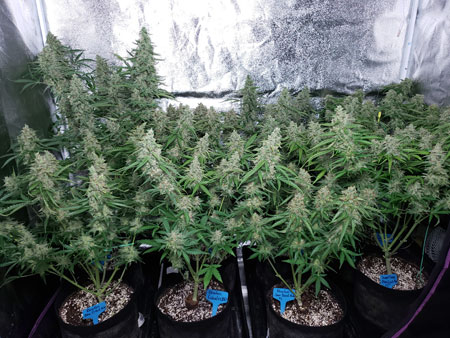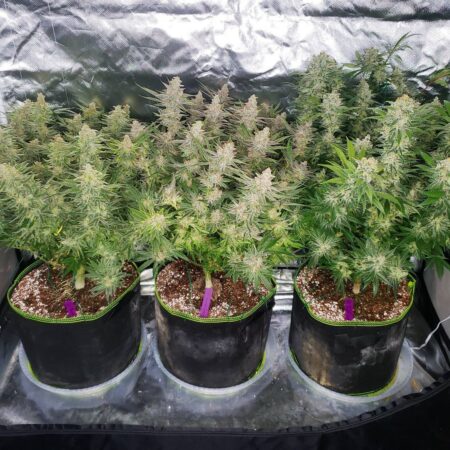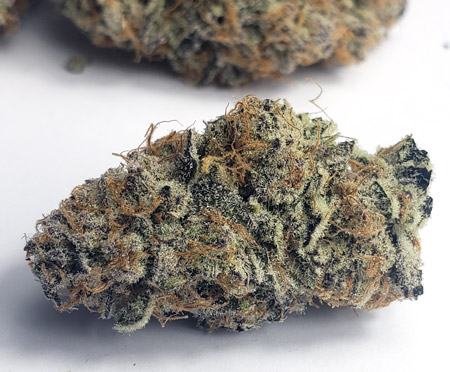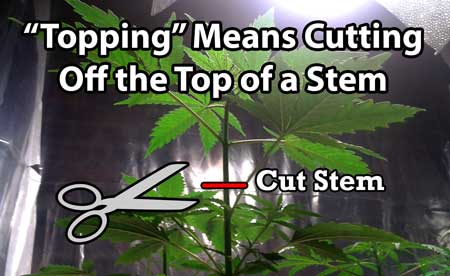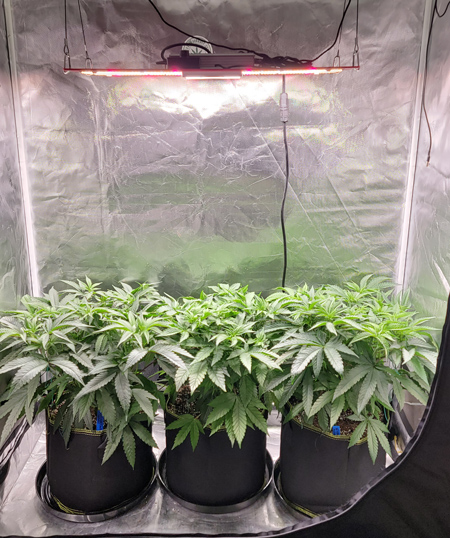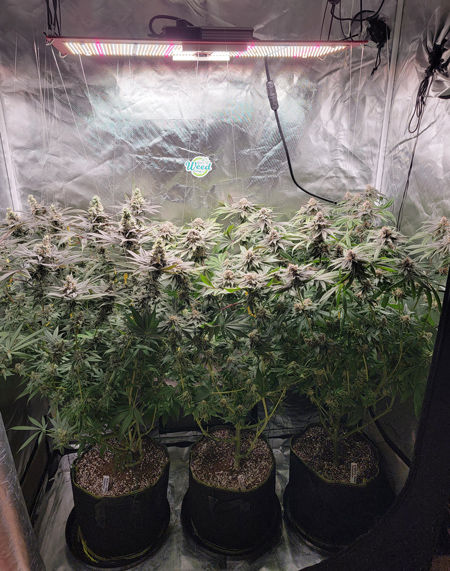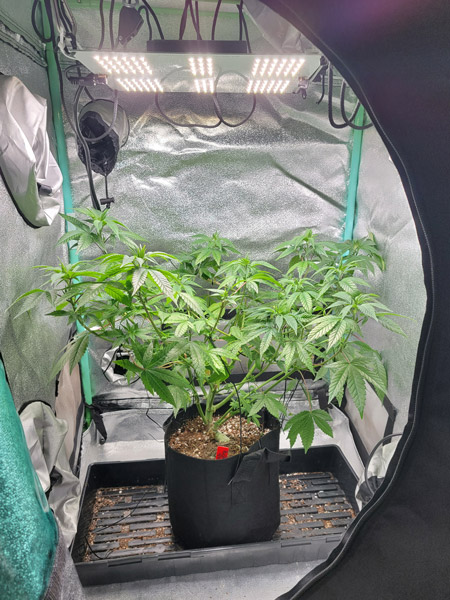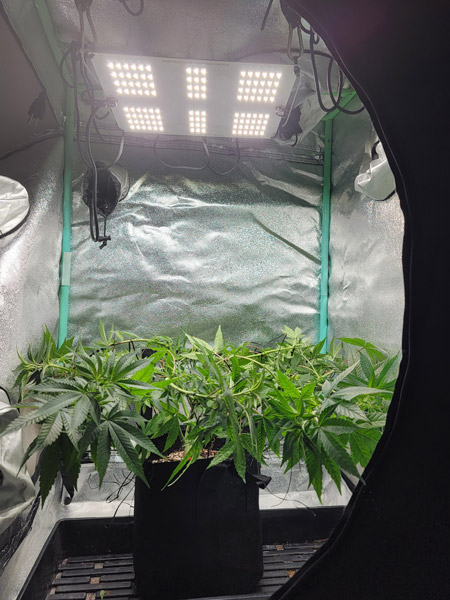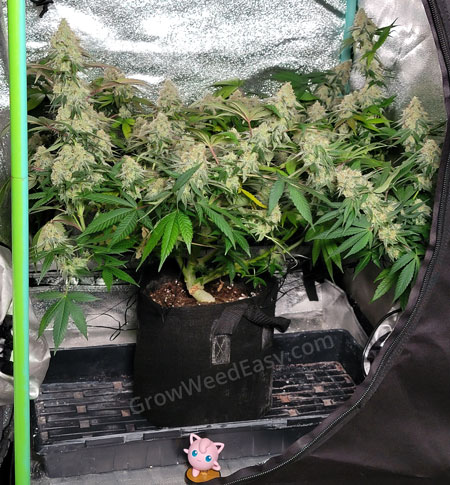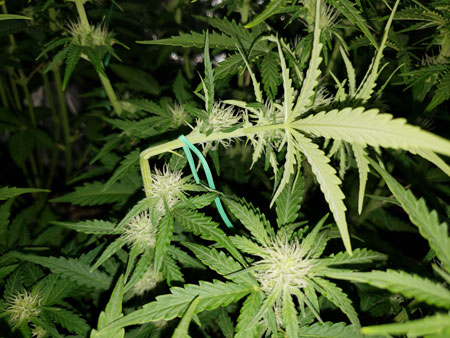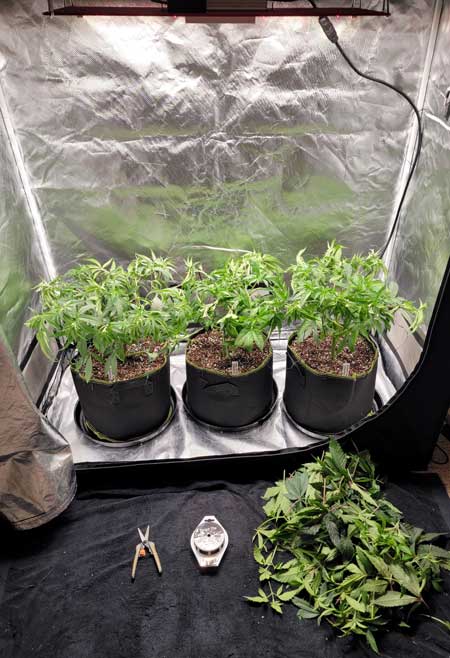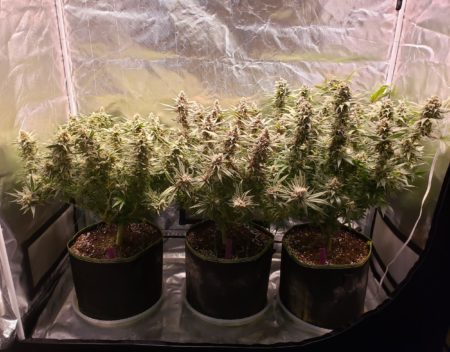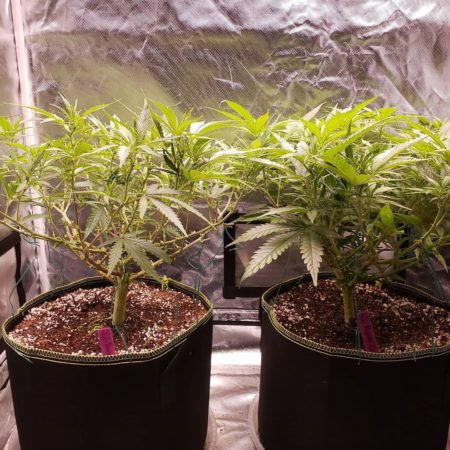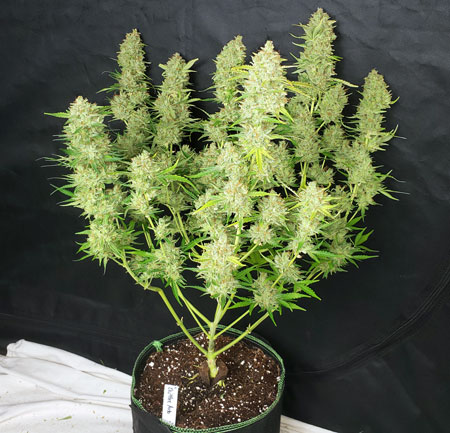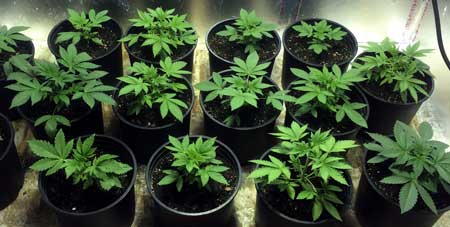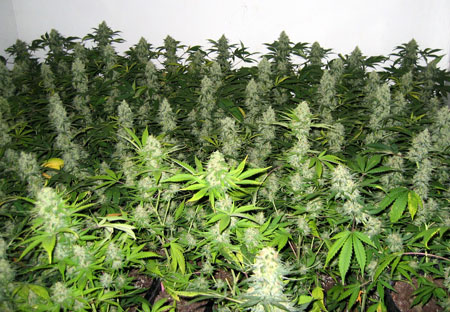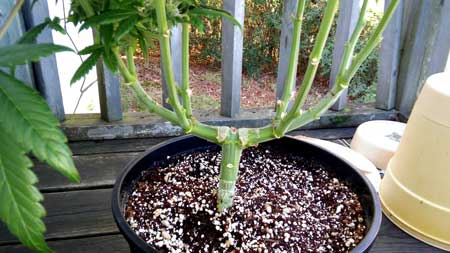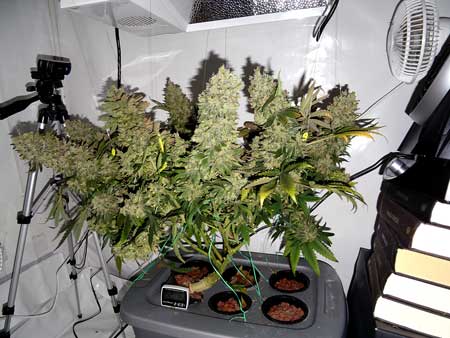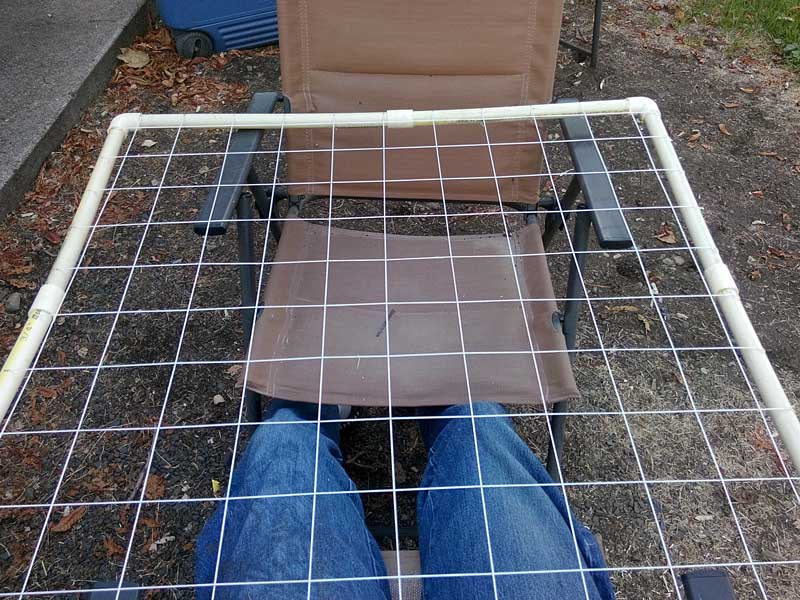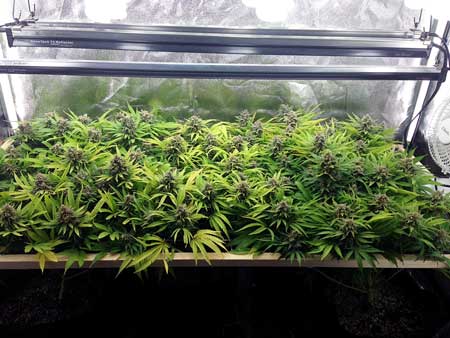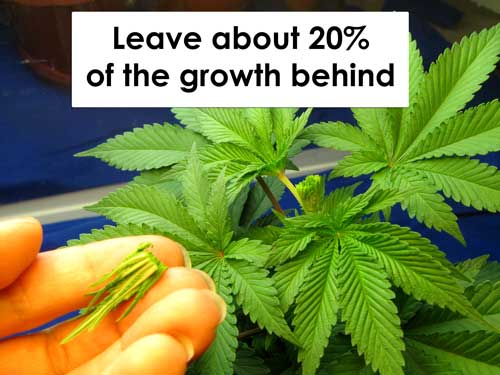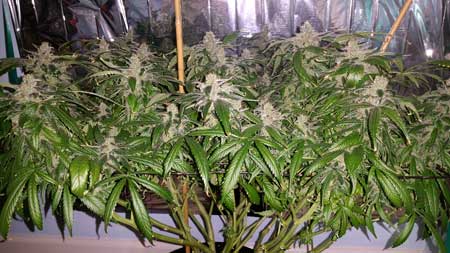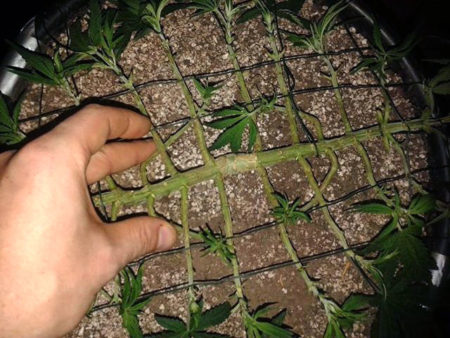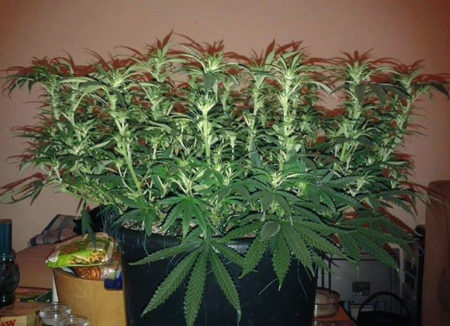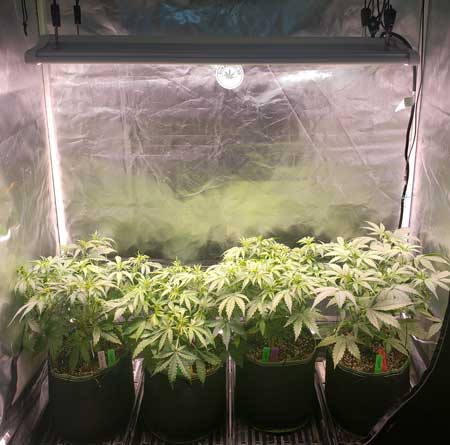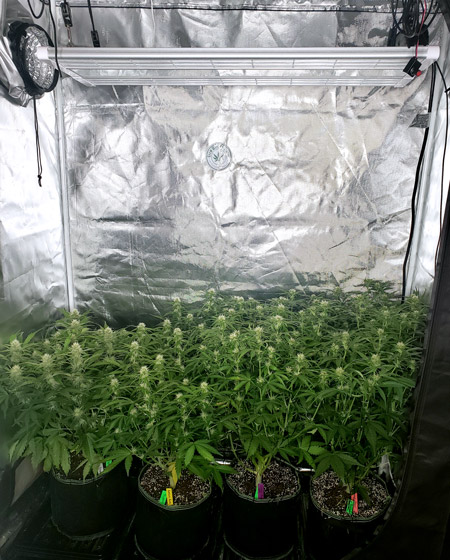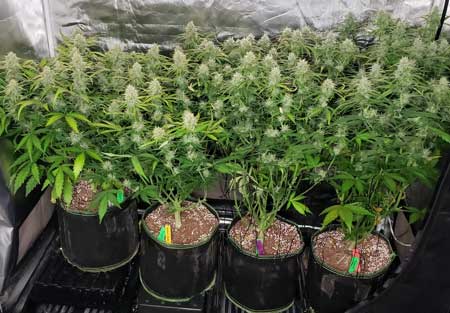by Nebula Haze
- Topping
- Low Stress Training (LST)
- Supercropping
- Defoliation (Strategically Removing Leaves)
- Lollipopping
- Sea of Green (SoG)
- Manifolding (aka Main-Lining)
- Screen of Green (ScrOG)
- FIMming
- Monster Cropping
Bonus: Fluxing
Every Cannabis Grower Should Use Plant Training Techniques
As a cannabis grower, your goal is to get your plants to produce a lot of high-quality buds as efficiently as possible. A key tactic to increasing cannabis yields and bud quality is to “train” your cannabis plant when it’s young to grow wide and flat so that it produces a lot of fat top buds in the flowering stage.
The goal of all cannabis plant training techniques is to grow wide flat plants with many big top buds. Fill your grow space with top-shelf weed!
Cannabis Plant Training Benefits
- Bigger yields
- Denser buds
- Increased bud potency (higher THC)*
*In our side-by-side experiments, trained cannabis plants produce buds that have higher THC levels when tested at the lab.
Today’s cannabis plant training tutorial is all about showing you how to use free techniques to get more and better quality buds from your current setup.
Achieve better marijuana bud quality and increase THC levels with these free plant training techniques!
1.) Topping
Topping is the #1 most important, easiest, and most effective cannabis plant training technique. If you must choose only one technique, do this.
“Topping” means cutting off the growing tip (“top”) of the main stem to encourage the growth of two or more secondary stems. A grower typically “tops” the plant when it’s a few weeks old. The purpose of topping is to break the apical dominance of the cannabis plant (reduce the tendency to grow one main trunk) so it naturally grows with many branches. Topping a young cannabis plant helps encourage it to grow wide and bushy with many tops for buds to grow.
Topping means cutting off the top of a cannabis plant when it’s a few weeks old.
The result: plants naturally grow more bushy, even if you don’t do anything else.
Topped cannabis plants naturally grow wider and bushier.
The result is many tops on each marijuana plant, and each of those top stems becomes a main bud.
2.) Low Stress Training (LST)
Low Stress Training (often called “LST”) is a fancy way of saying “bending and tying down branches”. The goal of LST is to get the plant to grow in the shape you want, typically to create a more even and horizontal canopy so the plant produces many buds instead of just one. Training cannabis plants to grow flat and wide also helps deliver more light to more top buds, increasing overall yields and bud quality.
This is another technique, like topping, that can definitely be used by itself to increase yields without doing anything else.
Learn More: Low Stress Training Tutorial
Cannabis plant before low stress training.
A cannabis plant after low stress training. Branches were bent down and away from the middle of the plant, then secured with plant twisty tie.
At harvest, the cannabis plant has many big buds instead of only one. (Here’s the full grow journal)
3.) Supercropping
The main purpose of “supercropping” is to gain total control over the height of unruly cannabis plants by being able to bend even the stiffest of branches without breaking them. I’m not sure how it got its name (perhaps just because it helps make super harvests?) but the supercropping technique involves pinching and bending the stems until they break internally, but not externally. After the stem can be bent, the branches get secured where you want them to stay.
In addition to height control, supercropping causes the plant to form a knuckle at the bend point, which, as a bonus, may increase the flow of nutrients and hormones in some cases. This technique may also potentially increase the potency of buds by slightly stressing the cannabis plant in a “good” way. However, be careful to follow the tutorial to make sure you don’t accidentally break the skin and potentially kill the branch.
Learn More: How to Supercrop Plants to Control Height
Supercropping is a technique to safely bend branches at an extreme angle without “breaking the skin”. This gives you a lot more control over plant height.
4.) Defoliation (Strategically Removing Leaves)
“Defoliation” means removing fan leaves, and should be done in a strategic way to get the best results. The main goal is to remove big fan leaves that block light from reaching the bud sites early in the flowering stage. This helps the plants grow into a better structure, improves airflow, increases light penetration, and overall enhances bud development. However, this technique should be done with caution as over-defoliation can stress or stunt the plant, and works best if you follow our defoliation tutorial.
Learn more: Cannabis Flowering Stage Defoliation Tutorial
Defoliation means removing fan leaves in a strategic way during the early flowering stage. Strategic defoliation for cannabis plants is typically done on a specific schedule after flowering is initiated.
When done properly, strategic defoliation results in bigger, longer buds. In our cannabis defoliation experiment, defoliated plants also produced more THC!
5.) Lollipopping
The “lollipopping” technique involves removing the lower branches and leaves that receive little light and produce small buds. Essentially, you turn the plant into a lollipop with no leaves on the bottom. Removing the bottom leaves and bud sites that will never get light helps the plant focus its energy on the upper buds. As a result of lollipopping, the topmost buds typically grow bigger and denser.
Before and after lollipopping cannabis plants. The left plant was lollipopped, and the right plant has not been lolliopped yet.
This was done right as the grower initiated the flowering stage. Notice how all the leaves have been removed from the bottom of the plant and light now reaches the floor.
Lollipopped cannabis plants produce big buds that go deeper down into the plant. Notice how the bottom branches are bare.
Lollopopped plants tend to produce bigger and better top buds, with fewer small airy lower buds that typically are not that potent anyway.
Learn More: How to Lollipop Your Cannabis Plants
Useful Specialty Techniques
These techniques are useful in many situations, but unlike the tactics listed above (which are useful for every cannabis grower), these techniques may not be the best choice in every situation for every grower’s goals.
6.) Sea of Green (SoG)
“Sea of Green” (also known as “SoG”) is about creating a sea of buds with a bunch of little plants. Many small plants are grown together in close proximity, then forced to start flowering early. Since plants stay small, growing with the Sea of Green technique reduces the vegetative time, allowing for both quicker harvests and more harvests in a year. This technique works best for cannabis strains that have a dominant main cola, and for grow spaces where it is easy to reach all the plants including plants in the middle or back. Although Sea of Green is surprisingly efficient as far as the yields for the time and electricity used, it’s not suitable for growers with legal plant limits, and tends to take more work compared to growing fewer plants.
Learn More: How to Make a “Sea of Green” in Your Cannabis Garden
Grow many small cannabis plants for a “sea of green” and initiate the flowering stage when plants are still tiny (this size).
Each cannabis plant will grow one main bud and fill your space with weed.
7.) Manifolding (aka Main-Lining)
Originally called main-lining, this technique has come to be called “manifolding” because that is more descriptive, and also because “main-lining” has another meaning in the drug world. Manifolding involves topping the main stem multiple times when the plant is still small to create an even number of main colas that grow from a single manifold. This process creates a symmetrical and balanced plant where each main bud receives equal amounts of nutrients and light.
Note: Autoflowering strains cannot be manifolded because their vegetative stage is too short. Learn more about how to train auto-flowering cannabis strains.
The manifolding process is a neat way to learn about training cannabis plants and also ensures an excellent harvest of many big buds. In my opinion, every dedicated cannabis grower should try manifolding a photoperiod plant at least once, even if just for the experience. It’s not necessarily the most scalable or efficient plant training technique, but is definitely one of the most fun!
Manifolding is a training regimen that causes the entire plant to grow from one main “manifold”. Manifolds are fun and interesting to make!
Example of a manifolded cannabis plant at harvest.
8.) Screen of Green (ScrOG)
“Screen of Green” (often abbreviated “ScrOG” – no relation to Sea of Green technique despite the similar names) refers to using a screen or net to support and train the branches to grow flat and wide. The branches are woven through the screen as they grow, creating a flat and uniform canopy that maximizes light exposure and bud production. Creating a screen of green can be useful in some situations, but personally, I believe it’s often less work to use other techniques on this page to create wide flat plant canopies. Once a cannabis plant is woven through the screen, it’s stuck in place unless the screen also moves, which can be inconvenient. Also, if you use wire as part of the screen, it can be difficult to cut all the buds out at harvest.
Learn more: Screen of Green Tutorial
Create a screen (best to use string instead of wire to make it easy to cut away from plants at harvest).
Example of a cannabis plant growing in a screen.
(Less Useful) “Hit or Miss” Techniques
These cannabis training techniques are not consistent and should generally be avoided, or at least considered experimental.
9.) FIMming
“FIM” stands for “F*ck I Missed” 😂 Essentially, this technique is similar to topping, but instead of cutting through the main stem, a small portion of the top of the plant is left behind. FIMing was “discovered” when someone messed up while topping their plant. When done in just the right way, this can result in four or more secondary stems growing from the same node. The downside is it often doesn’t work as intended. While topping consistently splits one stem into two, FIMing can result in 1, 2, 3, or 4 final stems. If you want 4 main stems, it’s better to top the plant twice than FIM it.
FIMing means removing 80% of the top node and hoping it results in 4 main branches (inconsistent and not recommended).
10.) Monster Cropping
The “monster cropping” technique involves taking clones from a flowering plant and reverting them back to the vegetative stage (“re-vegging” the cannabis plant). A re-vegged clone often grows strangely, with multiple branches and bud sites, creating bushy and monster-like plants. Some growers think this can be an easy way to make the plant grow many buds, but in my experience, re-vegged plants grow slowly for a long time compared to seeds or regular clones. Almost any other technique on this page to make plants bushy gets faster and more consistent results.
Learn More: What is “Monster Cropping” a Cannabis Plant?
A “monster cropped” plant. Note: a cannabis grower will likely get better results with almost any other technique on this page.
Bonus: Fluxing
Similar to manifolding except more complicated and with more steps. This gets similar results as manifolding but takes more time so it’s best for growers who enjoy the process of training and experimenting with vegetative cannabis plants. Typically, you’ll get the same results for less effort by manifolding a cannabis plant instead.
Fluxing is essentially a more complex version of manifolding.
Fluxing gives similar results to other techniques on this page that take less time.
Learn More: What is “Fluxing” and How Do You Do It?
Start training your cannabis plants today using the techniques in today’s tutorial!
Grow many buds at the same time…
…and enjoy your bountiful harvest!

